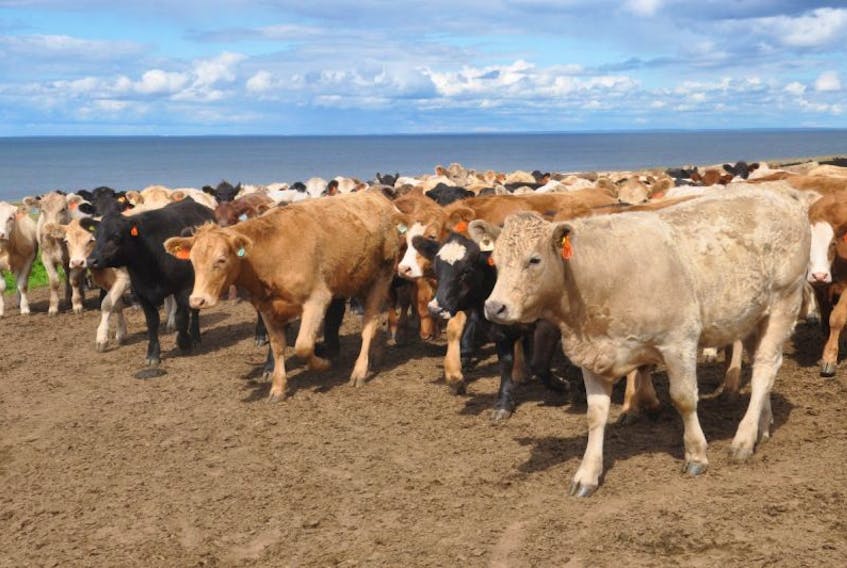Those tasked with running the Cape John Community Pasture Co-op have had a busy season this year. The seaside pasture looking out on the Northumberland Strait has been packed with cows – to the point of being at full capacity this year.
Dan Thompson, a board member, treasurer and secretary for the Cape John Community Pasture Co-op, said the pasture being at capacity is a good sign. It serves as an indication that the province’s cattle market has escaped the ill effects of bovine spongiform encephalopathy (BSE) crisis that spanned the early-to-mid 2000s and crippled Canadian beef exports.
The mandate of the pasture – which runs from the third week in May to the third week in October – is to put cattle belonging to as many Nova Scotian cattle producers as possible, so that researchers can learn more about cattle, and cattle farmers can take some of the pressure off themselves and their land for a while.
Such a mandate has proven difficult in the past, Thompson recollected, since the province has been short on cattle for the last few years, with BSE causing a drop in the Canadian cattle market.
Ever since the price of cattle has recovered from the BSE-induced lows, there has been a growing number of people looking to get involved with the pasture.
“We were short on cattle at the tail end of BSE. A few years ago, there seemed to be a turn in the cattle market,” said Thompson. “I think that was continuing, and now, we’re seeing the pressure that we don’t have enough space for all the cattle, instead of too much space and too few.”
This year, there were over 1,000 applications from cattle farmers around the province to use the pasture. Thompson said there is only space for between 700-750 head of cow at the pasture, adding, “we want to have as many producers involved as possible, but we have come up to our limitations, as far as the land base is concerned.”
Another factor in the jump in the pasture’s popularity comes from a growing need for local beef in the Maritimes. Thompson said the Atlantic beef plant in Prince Edward Island has been trying to get producers to carry more cattle.
“There was a recent call for 20,000 more head in the Maritimes to supply the Maritimes with its own beef, so the move toward more local is the second factor,” he said.
The producers whose cows roam the hills of Cape John run the gamut of the industry, from small cow and calf operators to large, more commercial operations – all from many areas across the province.
This year’s success has come in spite of weather that threatened to damage the food source of the cows. A dry spell brought on by a lack of rain in July and August threatened the quality of the grass, but eventually the rains came in, and with the help of some fertilizer, there was plenty of grass to keep the diverse cow population of Cape John well fed throughout the season.
Currently, a company called Perennia is running research on mob grazing techniques and pasture management, with an overall goal of improving grain and stocking rates.
Along with providing a good source of research to inform techniques through which cows are bred and fed, the pasture also serves as a way for cattle farmers to free up their own land for the summer.
“If you move a herd from your property, you’d be able to take pressure off the land bases. In a normal farming situation, you’d have half of your land for pasture and half for the winter feed,” said Thompson. “If you put the cattle at Cape John, you can concentrate on making more hay and making more feed for the winter with the other half of your land.”
Thompson uses the pasture for his cows, and added that sometimes it can help in separating bulls from other cattle, or separating calves from their mothers, when weaning them.
“It saves a lot of time in fencing in the spring, when you’d rather be planting or working your land than fencing,” he said.
Thompson said he and the rest of the board would love to see the pasture expanded, but for the time being, “we’re pretty much locked into the land base we have.”
The board has been considering working in conjunction with other pastures in the province. A similar pasture in Mabou was underutilized this year, and Thompson suggested a collaboration could be a solution for the overabundance of interest in the Pictou County area.
“I hope we don’t have to turn anyone away.”









